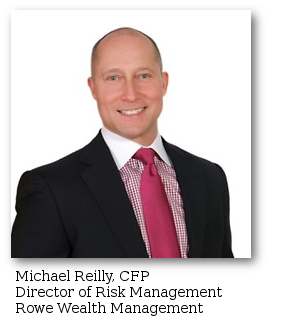Related Blogs
August 19, 2019 | Michael Reilly
That was Friday’s headline.

I love these because it gives me something to write about!
Before we dive into what investors like you should probably know, let’s look at the relationship between yields and why they matter.
The relationship or spread between the 2 and 10 year Treasury yields are so closely watched because this spread – or difference between the yields, has been known to act as a harbinger of recession.
The last 7 recessions have been preceded by an “inverted yield curve”.
Investors get spooked by the inverted yield curve, which occurs when the interest rates on short-term bonds are higher than the interest rates paid by long-term bonds.
This inversion happens when people are so worried about the near-term and possible recession that they pile into safer long-term investments.
See Illustration:

A normal yield curve would slope upwards to the right indicating longer term maturities offering higher yields, resulting in less demand.
Are there reasons for caution? – yes. Concern over the Trump administration’s China trade policy and Fed Policy and interest rates come to mind.
But, regardless of reason, investors need to understand that recessions just don’t show up one day like the common cold.
They take time – often giving investors plenty of opportunity to trade profitably along the way.
Prior to our last recession in 2008, the yield curve first inverted in December of 2005 and then again in June of 2007.
And right now, the “inversion” looks like this:
U.S. Department of Treasury
The 2 yr Treasury yield sits at 1.48%, while the longer term 10 yr Treasury is slightly higher at 1.52%. No longer inverted.
Yields have flattened and shouldn’t be overlooked. But if you listen to all the fear mongers you’d bury your head in the sand. And in my experience, that isn’t much of a strategy.
So, here’s the takeaway:
- The 2yr/10yr yields inverted briefly, which has been a precursor to recession.
- In spite of all the recent volatility, U.S. equities remain the dominant asset class on a relative strength basis. Meaning that’s where the world’s money continues to flow.
- International equities are selling off and money has been flowing out of the asset class and primarily into the perceived safety of fixed income – driving bond prices higher.
So, until U.S. equities show that they are no longer king of the hill, we will still look for opportunities in the asset class and take advantage of the panic.
Times like these are always risky for investors. The last thing you want to do is panic sell strong stocks right before demand returns to the market and miss out on a big chunk of the upside.
This is one of the biggest reasons we stress the importance of risk management here at Rowe Wealth. An investor who has correctly assessed their own level of risk tolerance and properly matched their portfolio’s risk to it is significantly less likely to fall victim to “market stress” and bail on their long term investments.
If you’re an investor with a portfolio valued at least $500,000 you may want to consider scheduling a free consultation with one of our advisors to ensure your risk is properly assessed. We can quickly evaluate your current portfolio and test your level of personal risk tolerance to ensure they’re properly matched.
Click here now to see available appointment times.

Tags

Get Our FREE Guide
How to Find the Best Advisor for You
Learn how to choose an advisor that has your best interests in mind. You'll also be subscribed to ADAPT, Avalon’s free newsletter with updates on our strongest performing investment models and market insights from a responsible money management perspective.



